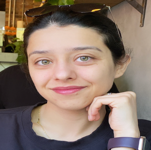Day 1 :
Keynote Forum
Jun Huang
University of Chicago, USA
Keynote: Direct observation of T cell receptor ligand discrimination
Time : 09:40-10:20

Biography:
Jun Huang is a tenured professor at the University of Chicago. His lab performs basic and translational research with the objective of developing effective vaccines and cell immunotherapies for the treatment of cancer, infection and autoimmunity. He carries out basic immunological research, focusing on molecular mechanisms of T cell recognition and signaling at the single-molecule level. He performs systems immunology, studying the differentiation of T cells at the single-cell level. He engineers CAR-T cells, aiming at the treatment of cancer and autoimmunity. He develops new biomaterials, enabling the detection, profiling and manipulation of T cells for diagnosis and treatment.
Abstract:
A major unanswered question is how a T Cell Receptor (TCR) discriminates between foreign and self-peptides presented on the Major Histocompatibility Complexes (pMHCs) of antigen presenting cell surfaces. Here, we used in situ Fluorescence Resonance Energy Transfer (FRET) to measure the lengths of single TCR–pMHC bonds and the conformations of individual TCR–CD3ζ receptors at the membranes of live primary T cells. We found that a TCR discriminates between closely related peptides by forming single TCR–pMHC bonds with different lengths and the most potent pMHC forms the shortest bond. The bond length dictates the degree of CD3ζ dissociation from the inner leaflet of the plasma membrane to precisely control the accessibility of CD3ζ ITAMs for phosphorylation. We further developed Lattice light-sheet microscopy Multi-Dimensional Analyses (LaMDA), an end-to-end pipeline comprised of publicly available software packages that combines machine learning, dimensionality reduction and diffusion maps to predict different cell signaling states by surface molecular dynamics. LaMDA reliably discriminates between structurally similar pMHC ligands by analyzing 3D TCR dynamics at the T cell membrane. Our data revealed the mechanism by which a TCR deciphers the structural differences among peptides via the TCR–pMHC bond conformation and TCR surface dynamics.
- Immunology | Immune System | Cancer Immunology | Immunotherapy | Immunotoxicology | Euro immunology | Immunodeficiency | Epidemiology | Transplantation Immunology Immunotherapy
Location: Rome, Italy
Session Introduction
Olena Getsko
The Chinese University of Hong Kong (CUHK), Hong Kong
Title: Does immunological memory stand behind onset of human parturition?
Time : 14:45-15:10

Biography:
Olena Getsko graduated from Donetsk National Medical University, Ukraine in 2012. She obtained specialization in Obstetrics and Gynaecology at the Department of Obstetrics, Gynaecology and Perinatology, Donetsk National Medical University in 2015 and worked as a MD and as an Assistant to Professor at the Department. In 2021 she started her PhD study at the Department of O&G, CUHK. Her study is focused on CD8+ memory T cells in human parturition.
Abstract:
Statement of the problem: The immune system plays a crucial role in establishing and maintaining pregnancy. Adaptation of the maternal immune response is essential for good pregnancy outcomes. Conversely, insufficient immune adaption is associated with pregnancy pathologies such as recurrent miscarriage, fetal growth restriction, preterm birth, and preeclampsia. Memory T cells are responsible for fetal-maternal tolerance. Recent data showed that a delicate balance of memory T cells is necessary for reproductive success. Parturition is the final step of a reproduction cycle. However, the role of memory T cells in human parturition remains unknown. This study aims to investigate differences and changes in CD8+ memory T cells and exhausted molecules expression in groups with spontaneous labor and induction of labor.
Derya T Ata
University of Strathclyde, UK
Title: Development of a vaccine against leishmaniasis
Time : 15:10-15:35

Biography:
Derya Ata is a third year PhD student at University of Strathclyde, Pharmacy & Biomedical Sciences. She is working on project developing a vaccine against leishmaniasis. She studied motor neuron disease at Yildiz Technical University, Turkey in her master degree. She finds Immunology fascinating and would like to contribute to understanding how the immune system protects against infection.
Abstract:
Statement of the problem: Leishmaniasis is a serious neglected tropical disease and nearly 2 million people around the world are at risk of infection. Visceral leishmaniasis is fatal if untreated and most cases occur in Brazil, East Africa and in India. It remains one of the top parasitic diseases with outbreak and mortality potential. At present there is no clinical vaccine for leishmaniasis. Therefore, control is mainly managed by limiting transmission and treating active cases. The purpose of this study was to test a new vaccine candidate in a murine model of visceral leishmaniasis.
